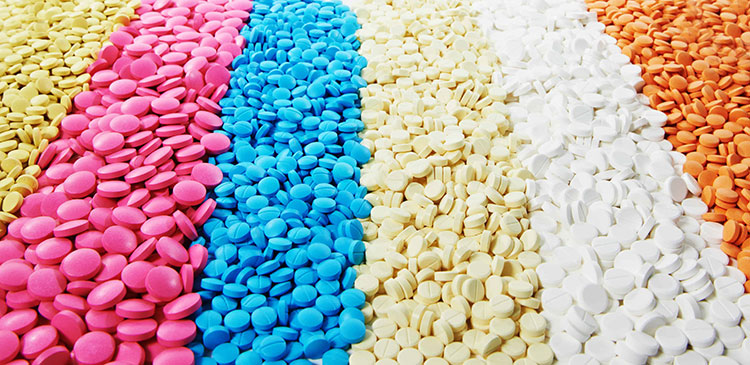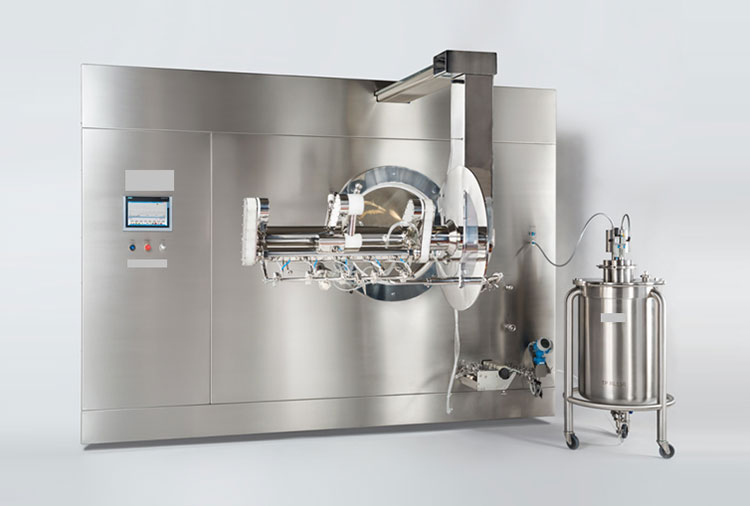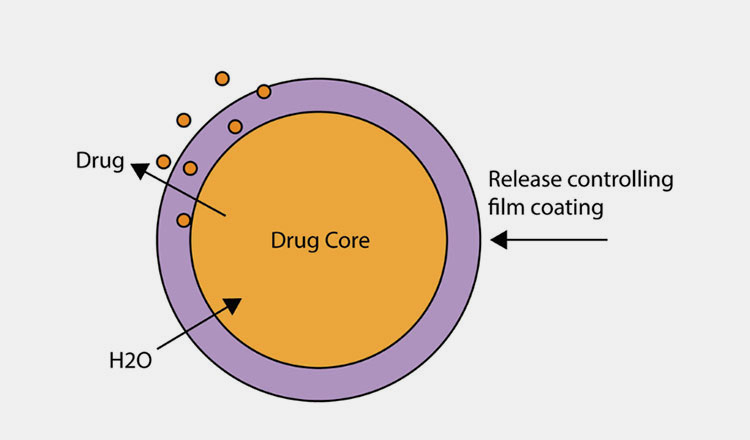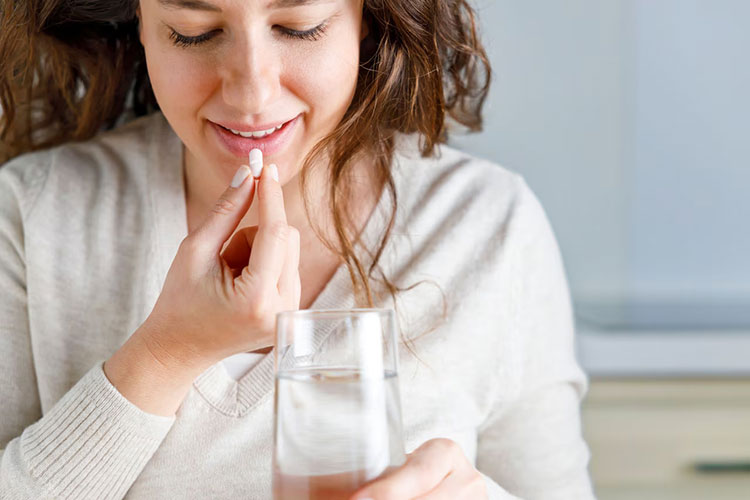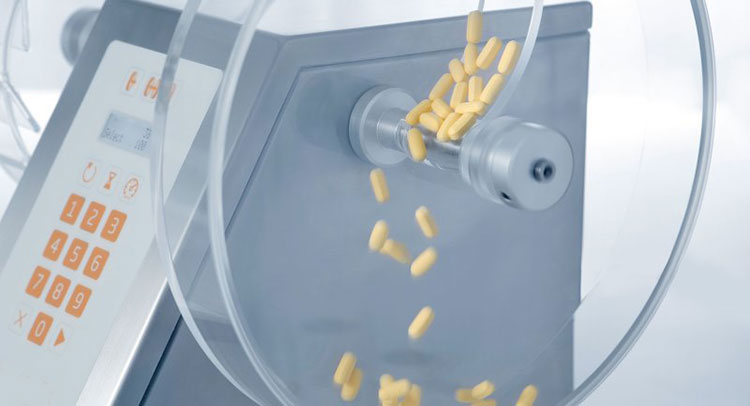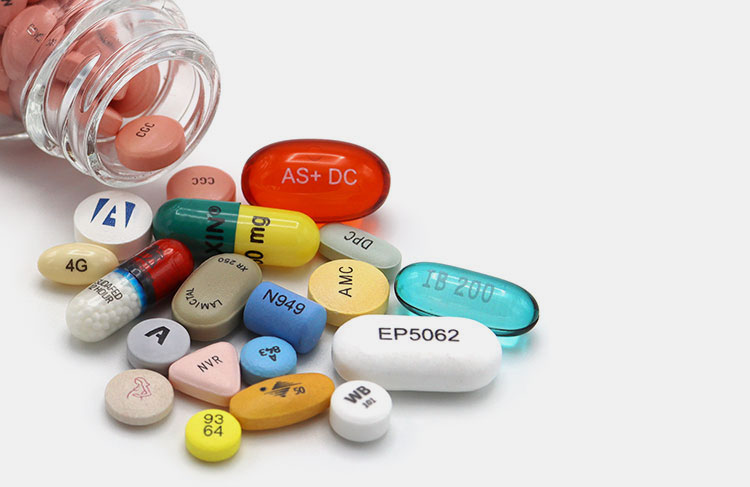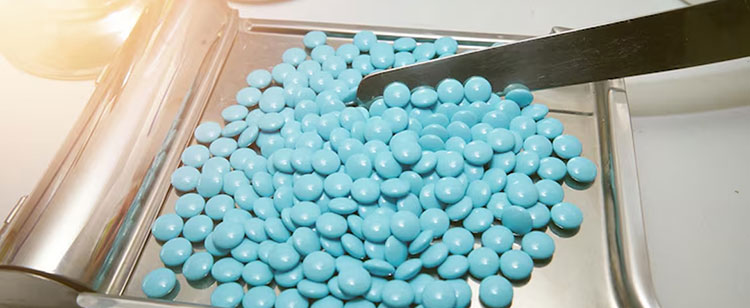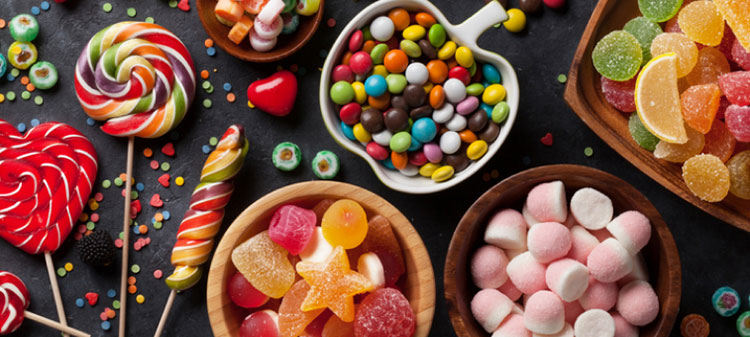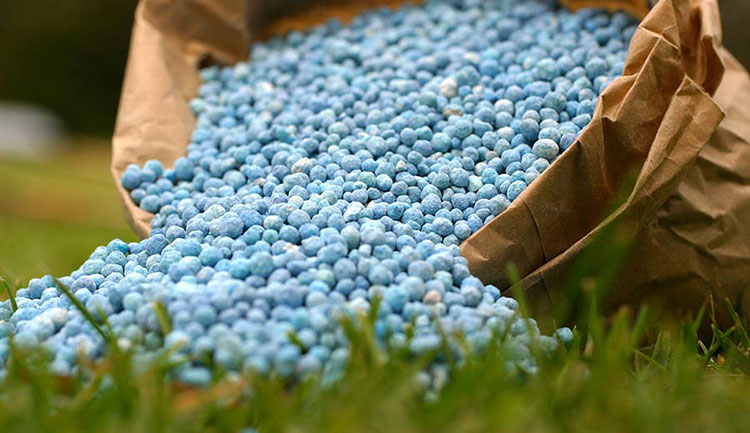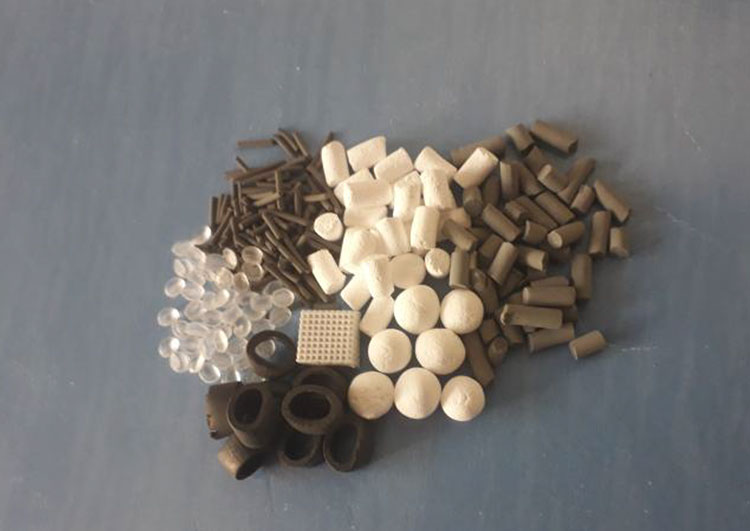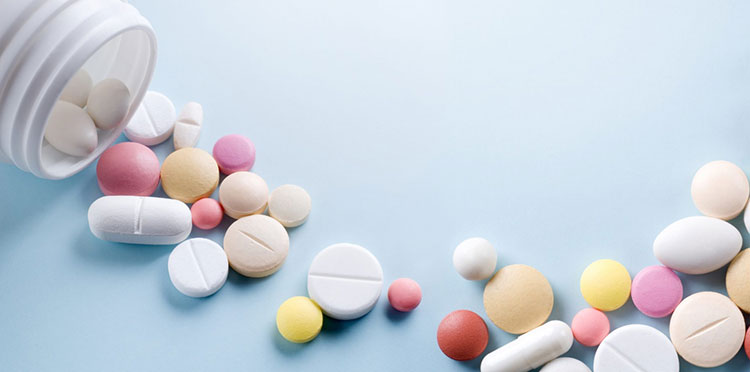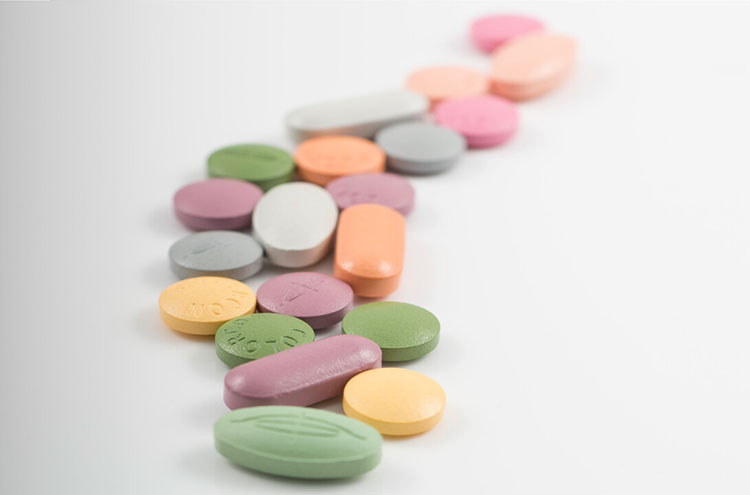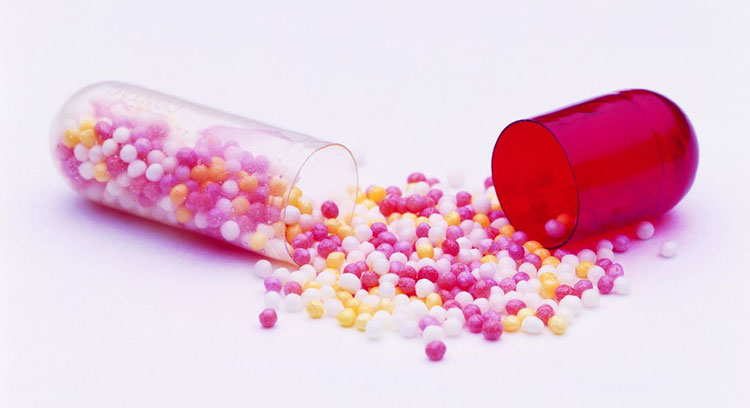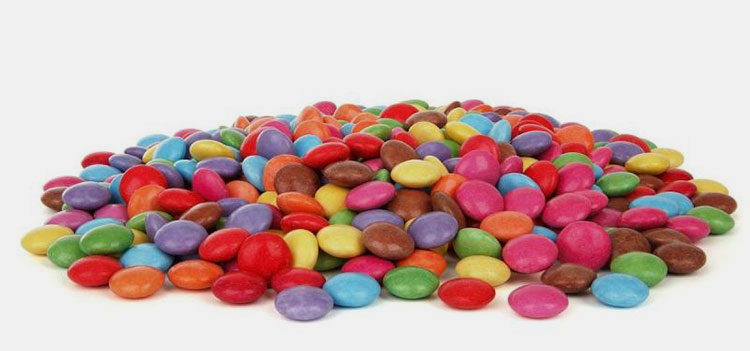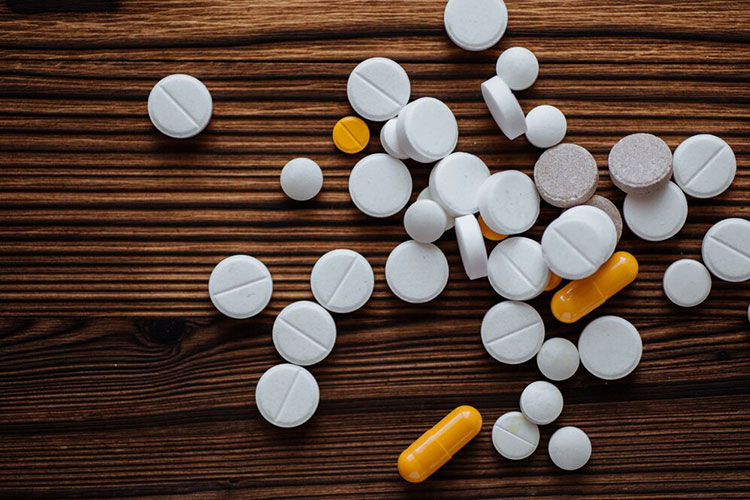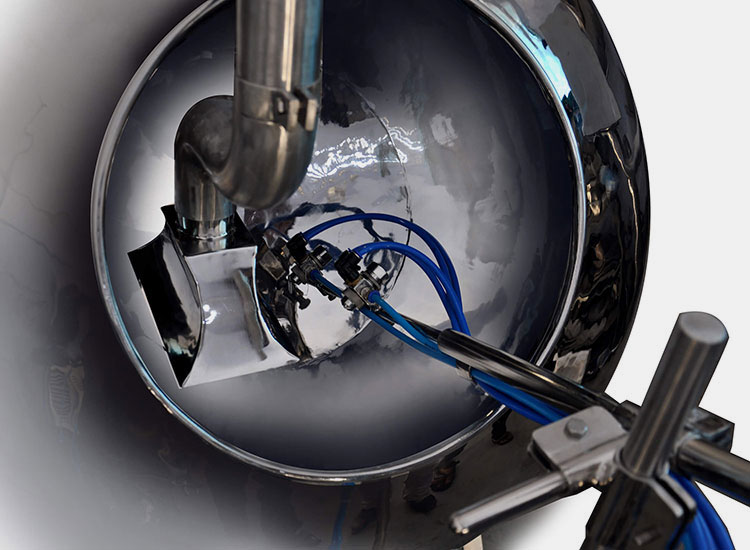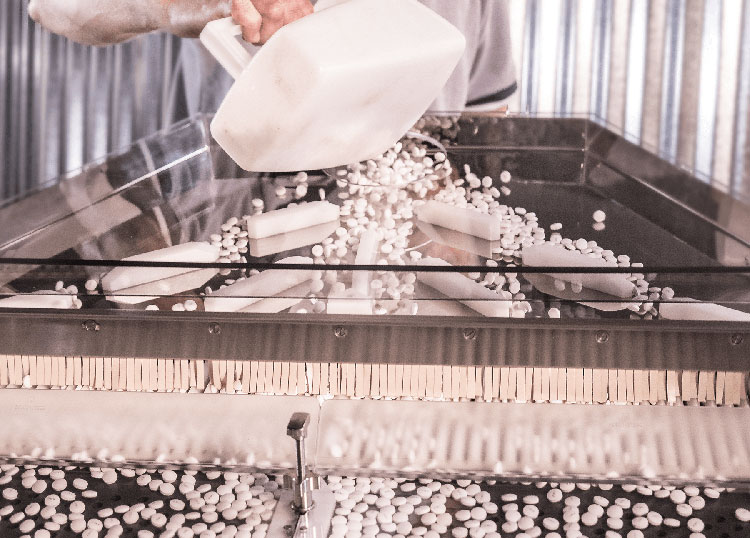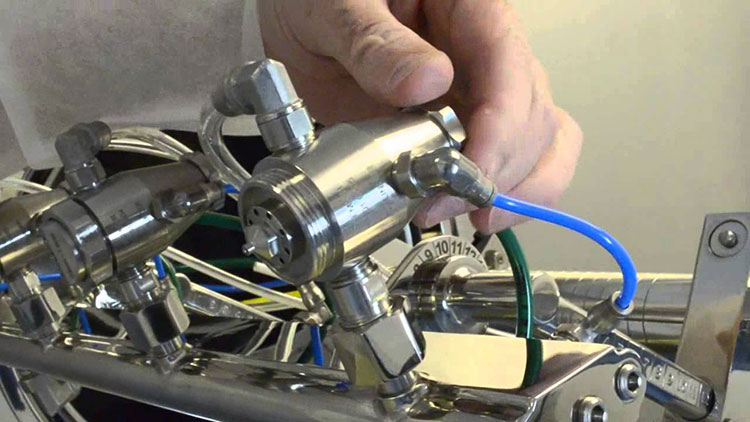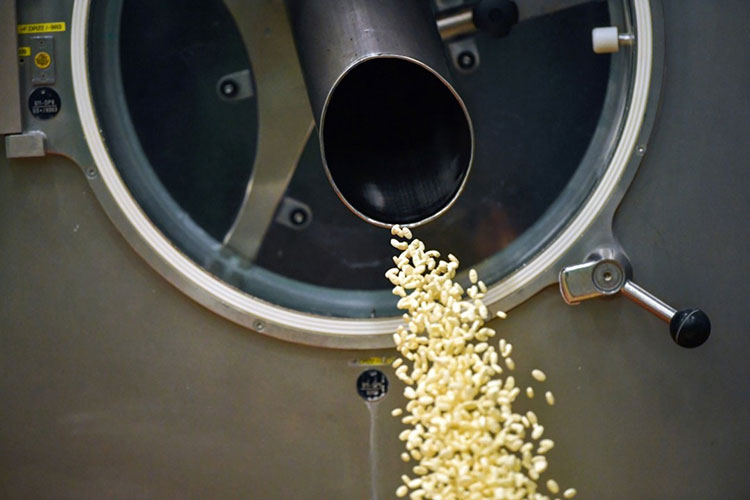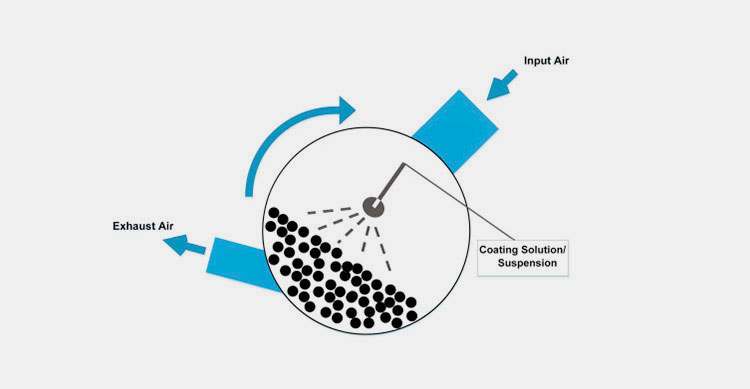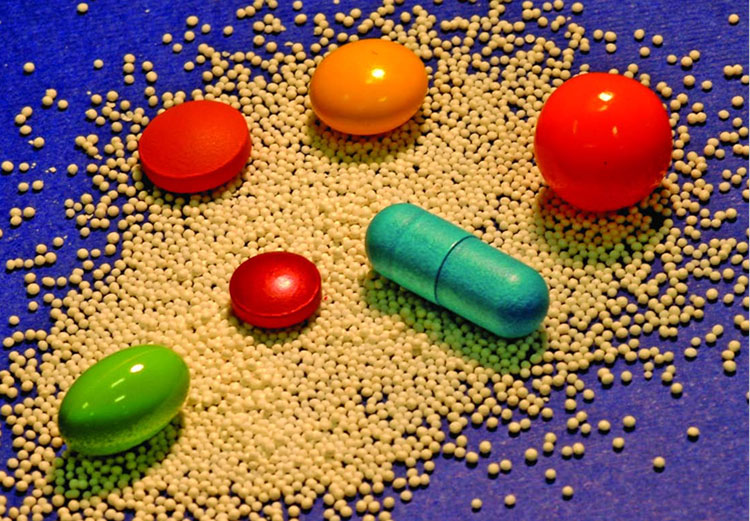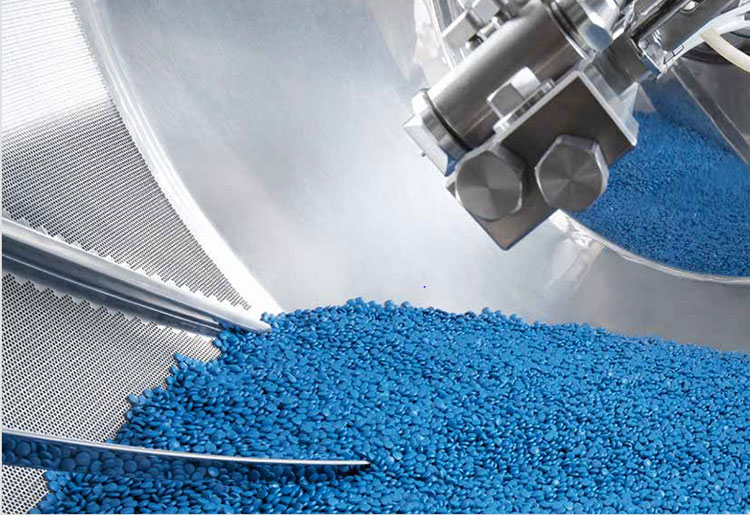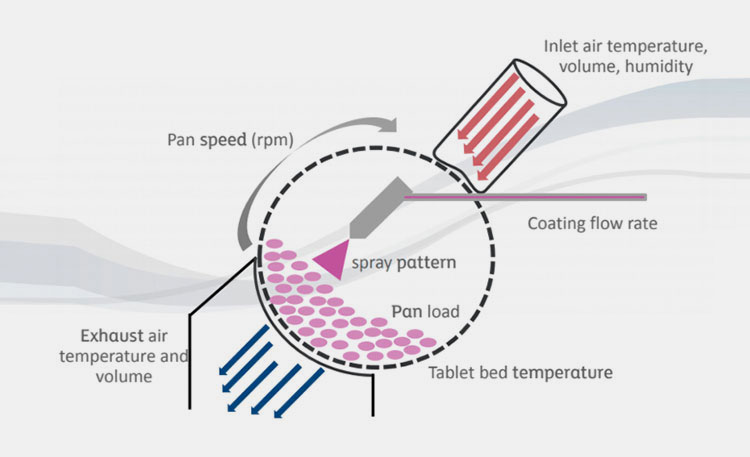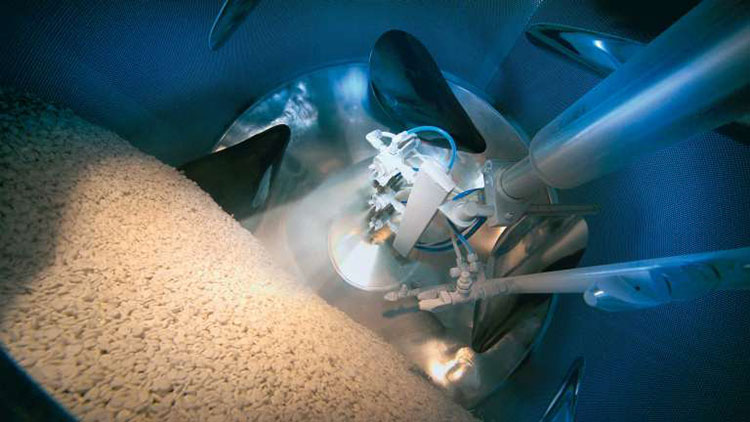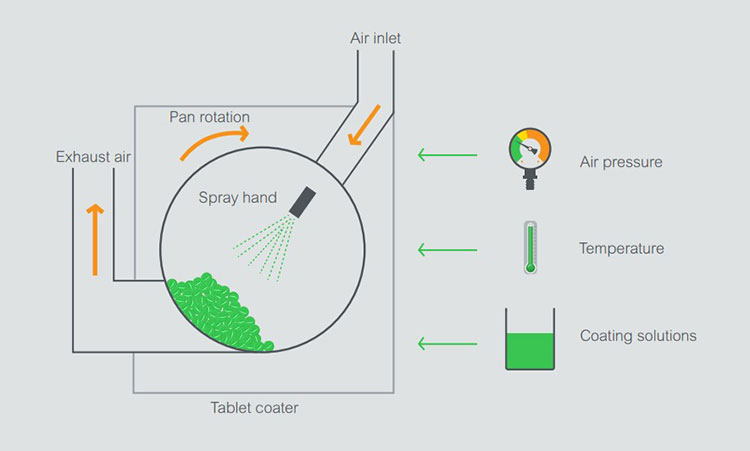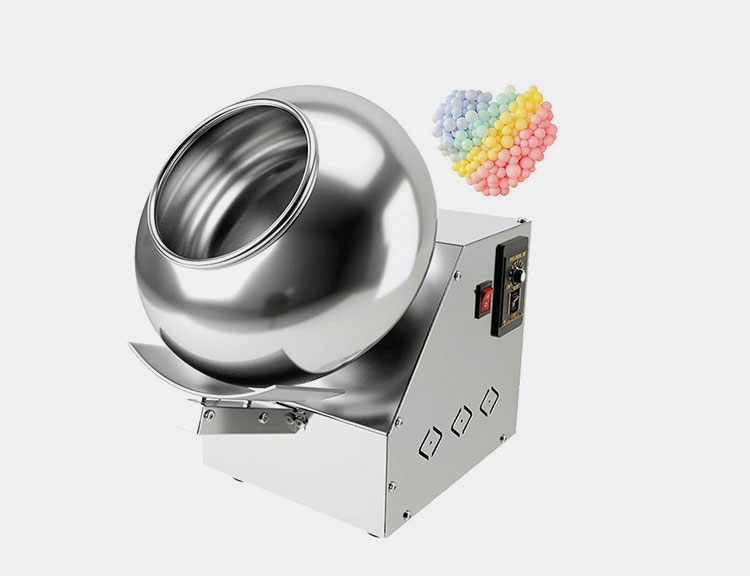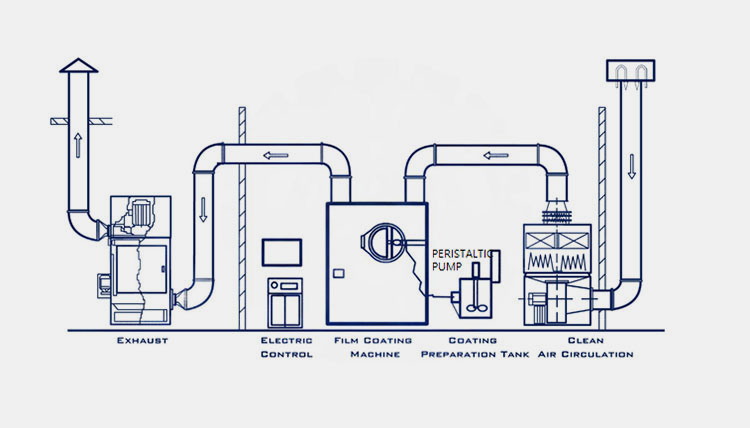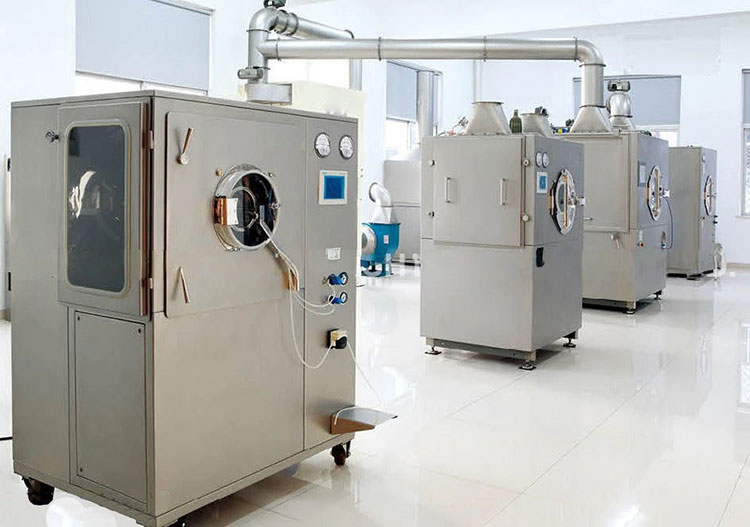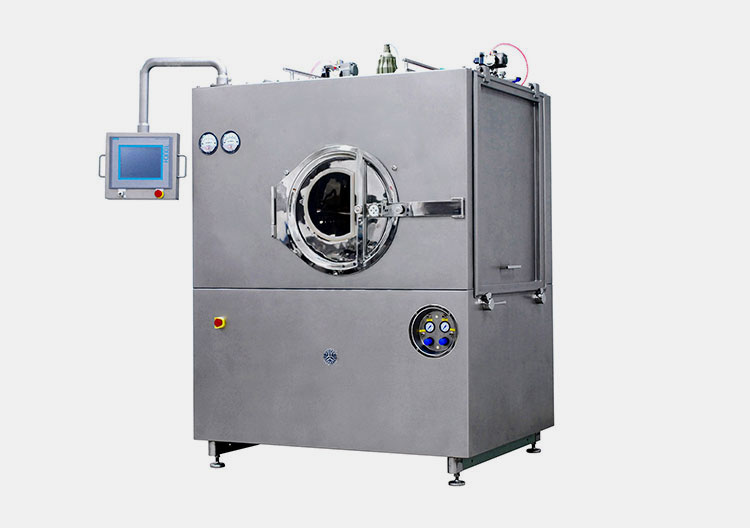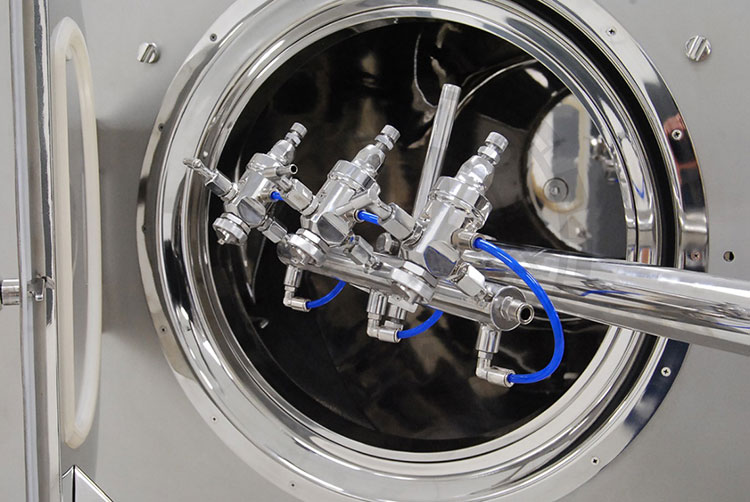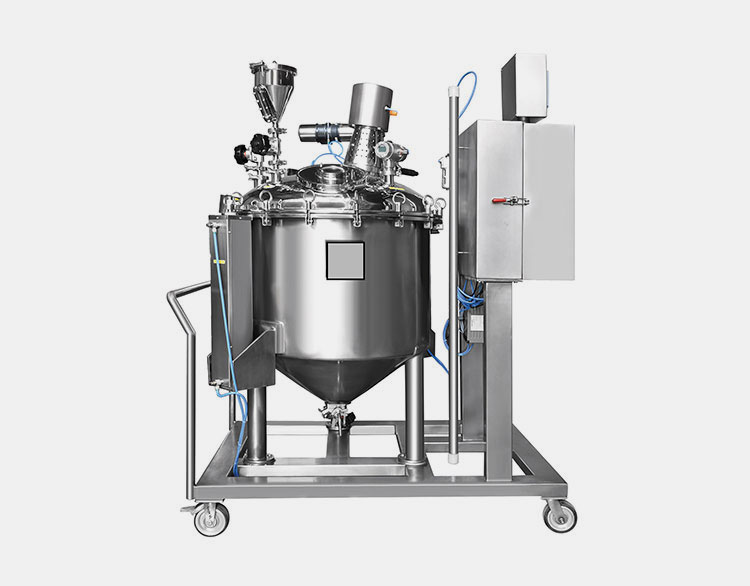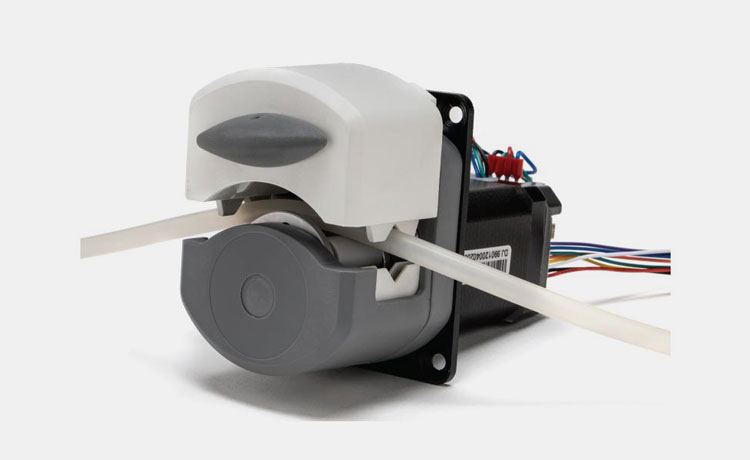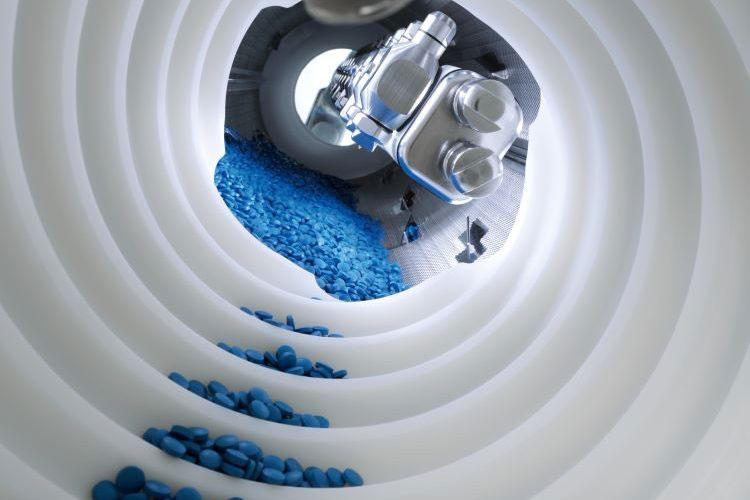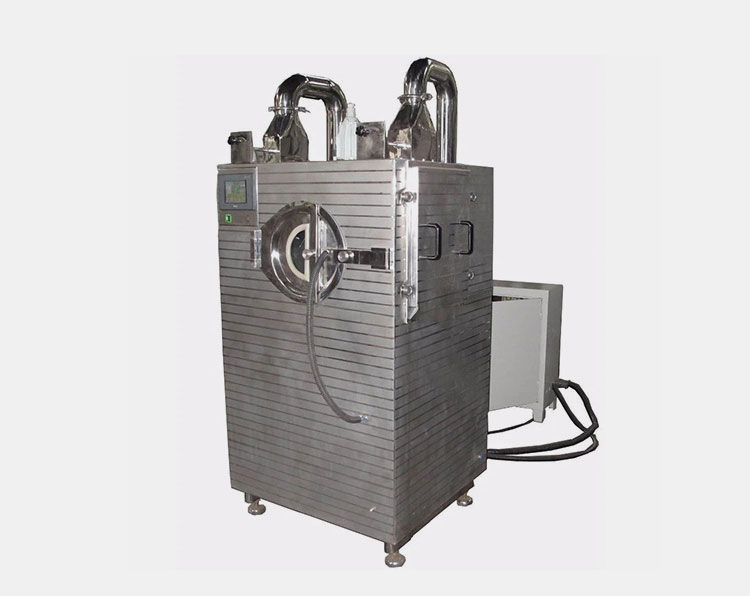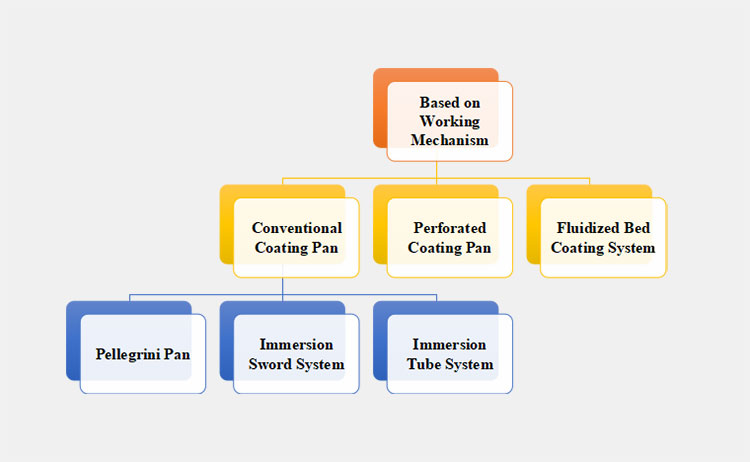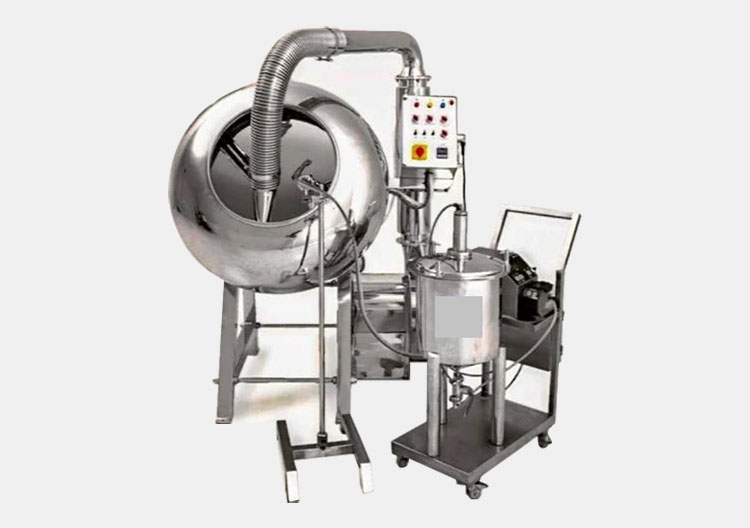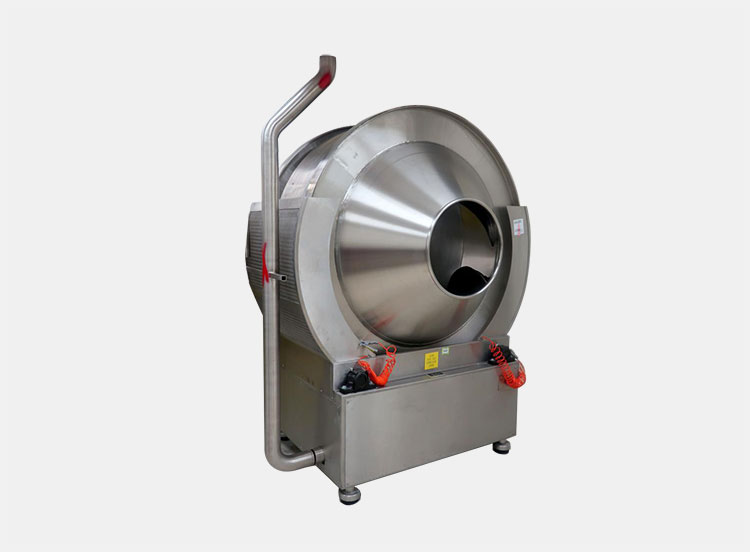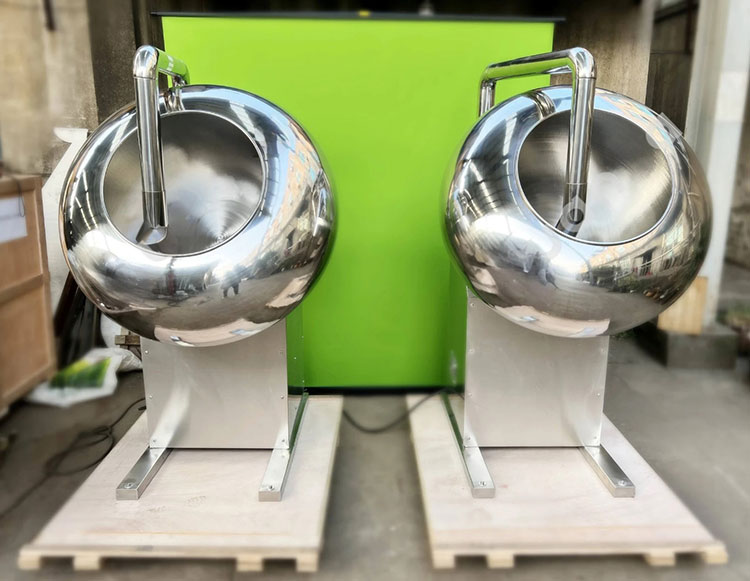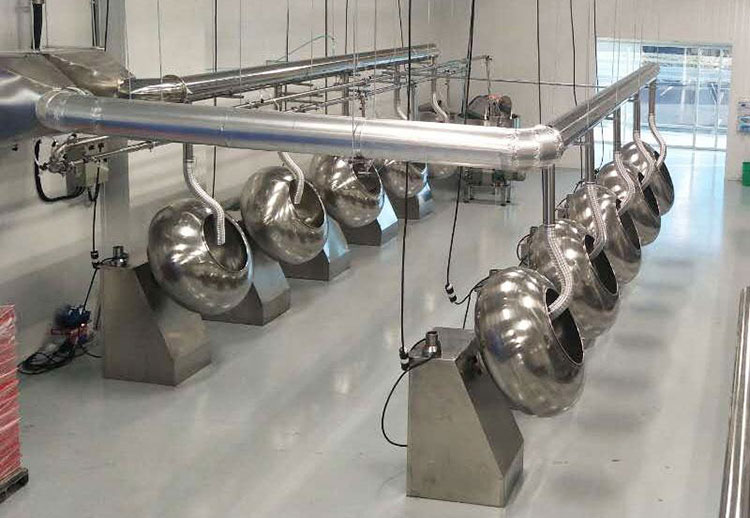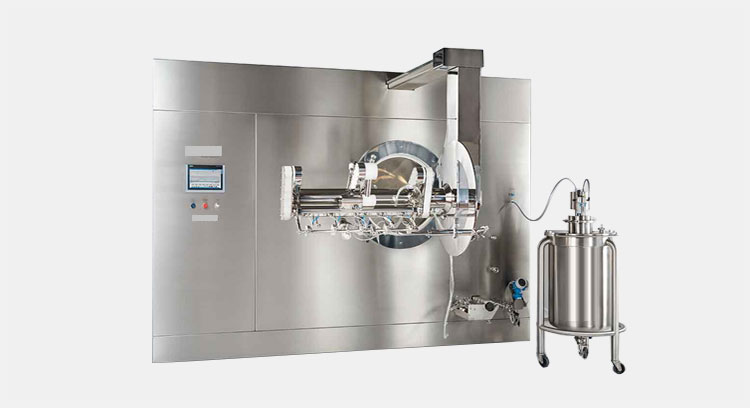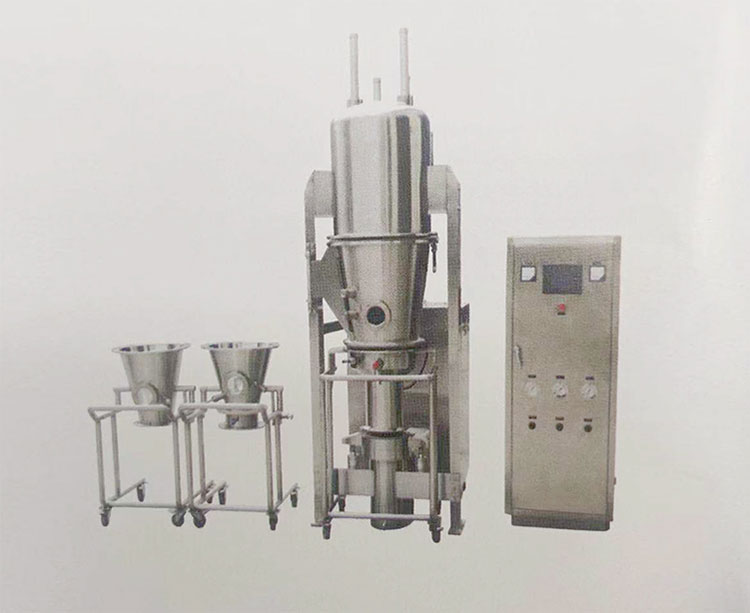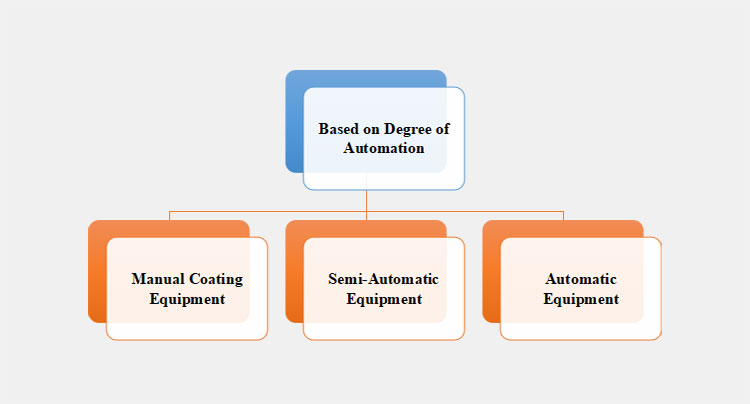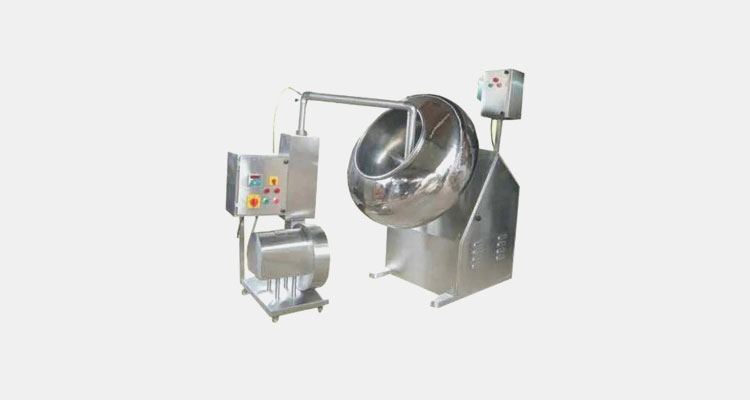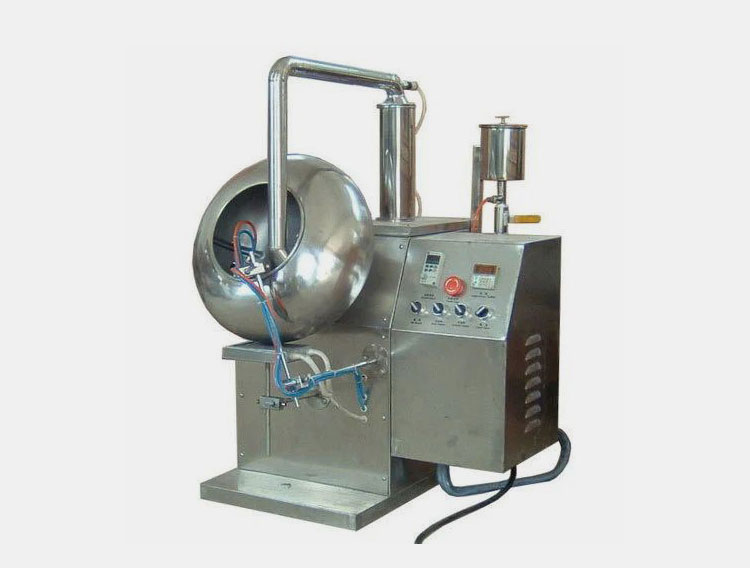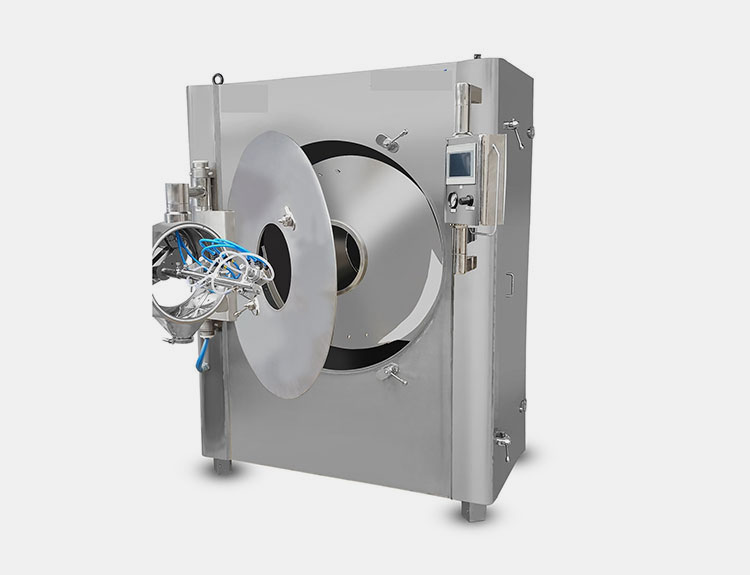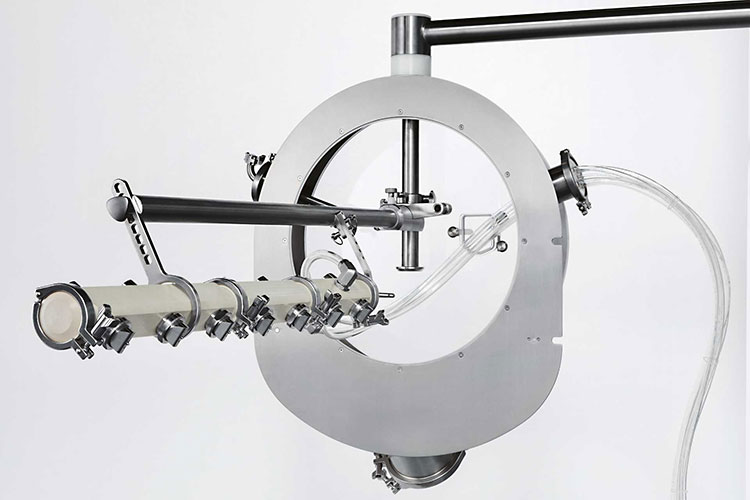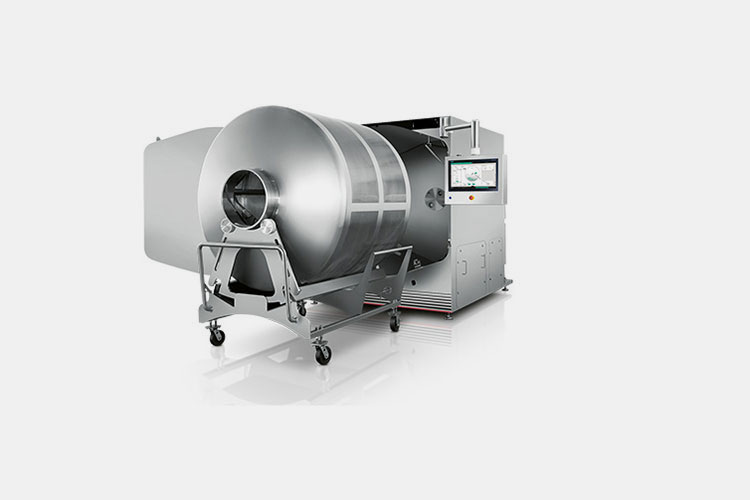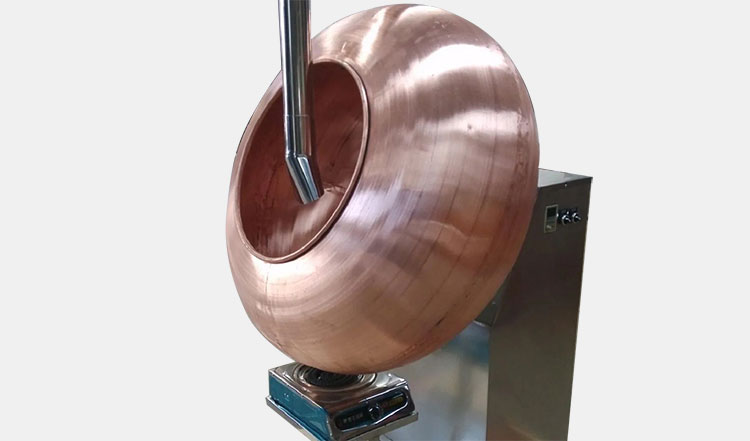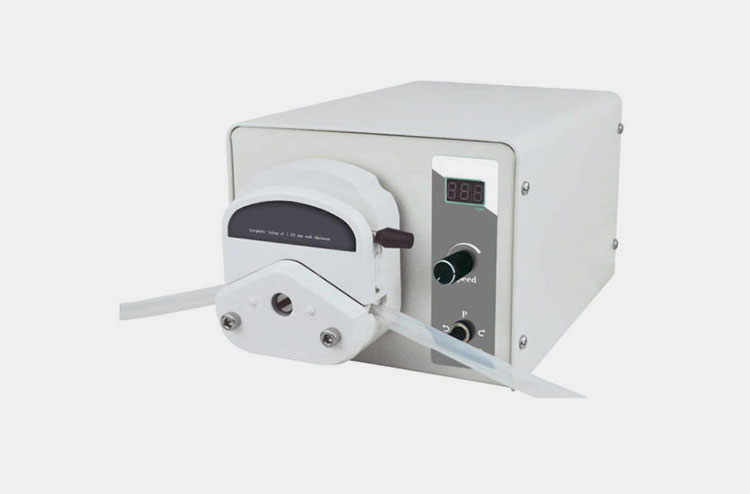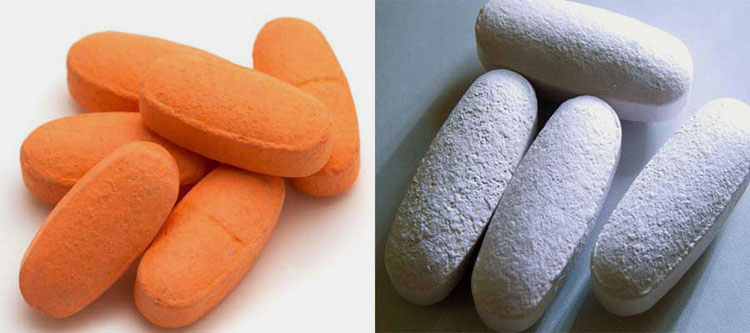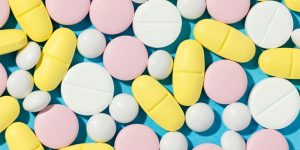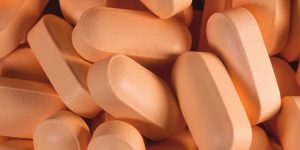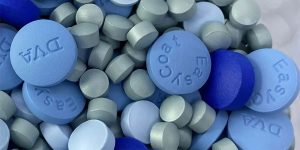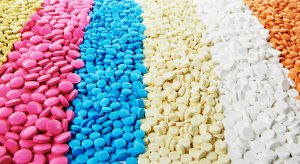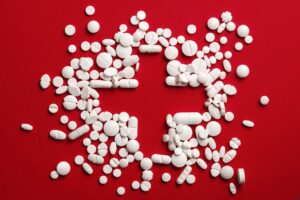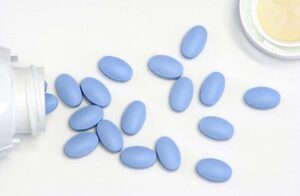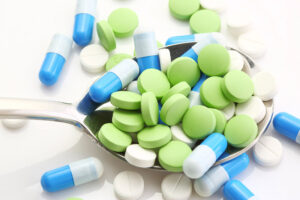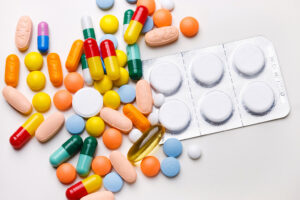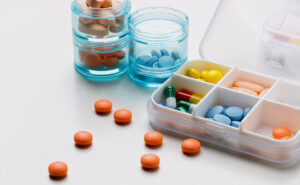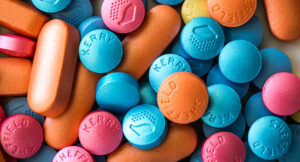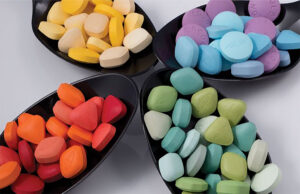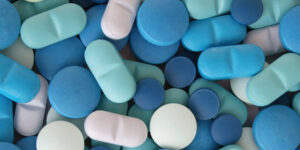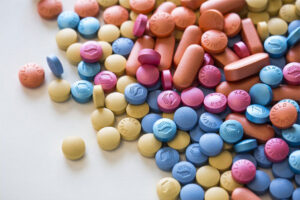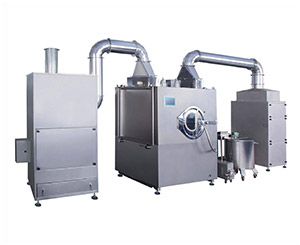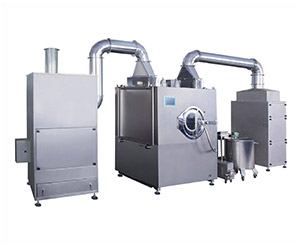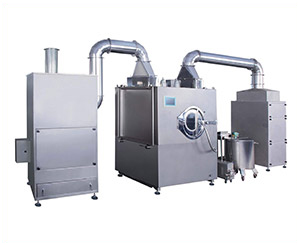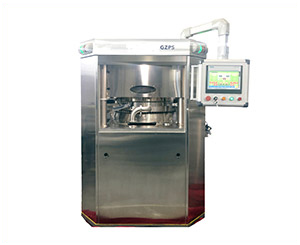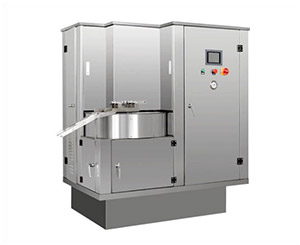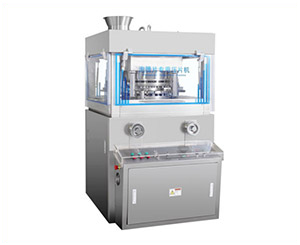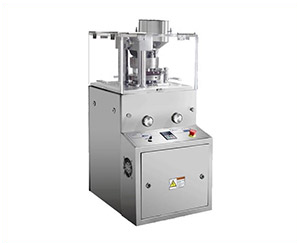Tablet Film Coating Machine: The Complete Buying Guide in 2025
Tablet coating is an important step in the tablet manufacturing process. The primary aim of coating is to provide a protective layer against gastric fluid and physical stress. It enhances the quality, stability, and bioavailability of the tablets.
A tablet film coating machine is a piece of equipment that makes a uniform coating possible. It applies a thin, consistent layer of polymer on the outer area of the tablet, protecting them from environmental factors, modifying drug release patterns, and providing a more pleasing appearance for the product.
This guide provides extensive details on a tablet film coating machine, focusing on the working principles, classification, application of the equipment, and key considerations for pharmaceutical manufacturers.
1.What is a tablet film coating machine?
Tablet Film Coating Machine- Picture Courtesy: Pharmapproach
Do you know how pharmaceutical tablets get their smooth, shiny, and protective outer layer? The tablet film coating machine is a game-changing equipment designed to apply a uniform coating on tablets. This coating serves multiple functions, such as protecting the API and modifying the drug release pattern.
The process is accomplished by applying a polymer solution, sometimes containing pigments or functional ingredients, through a spray gun on rotating tablets in a dry air steam. Modern tablet film coating machines incorporate various advanced technologies of the film coating process to enhance efficiency in pharmaceutical manufacturing.
2.Why is a tablet film coating machine important in pharmaceutical manufacturing?
Film Coating Enriches the Appearance and Color of the Tablet- Picture Courtesy: Kerry
The tablet film coating machine provides multiple benefits by applying a film coating on tablets. Advanced techniques such as solvent-free formulations continue to improve manufacturing, making a tablet film coating machine integral in tablet production. Let’s discuss some of the key advantages acquired by using this equipment:
Protected Active Pharmaceutical Ingredients
Film Coating Preserve API- Picture Courtesy: Kerry
When a machine coats the outer layer of tablets, it provides a protective shield to APIs from environmental factors such as moisture, air, and light, thus preventing degradation and increasing the shelf life.
Modified Drug Release Pattern
Enhanced Controlled Release Properties of Drug- Picture Courtesy: Springer Link
By utilizing this equipment for film coating, you can alter the drug release pattern of tablets, such as sustained or controlled drug release. It enables various formulations, such as enteric-coated or extended-release tablets, with improved therapeutic outcomes.
Improved Patients Compliance
Makes Tablet Palatable
The film coating of tablets makes swallowing easier and palatable as it masks unpleasant odors and tastes, enhancing patient compliance.
Increased Mechanical Strength and Handling
Decreased Friability of Tablets- Picture Courtesy: Ferry Group
The coating of tablets minimizes the risk of breakage or chipping (reduced friability) during transportation, and products remain intact during handling.
Identification
Helps Identification and Branding- Picture Courtesy: Ackley Machine
The coating also provides different colors, imprints, and finishes to the tablets, which enables easy identification and brand recognition.
3.In which industries is a tablet film coating machine commonly used?
Tablet Film Coating Machine Serves in Multiple Sectors- Picture Courtesy: Pharmaceutical Updates
A tablet film coating machine is predominantly used in the pharmaceutical industry but also has applications in other sectors where a product needs protective coatings, controlled release, or appealing appearance. The major industries include:
Pharmaceutical Industry
Enhancing Tablet Stability, Compliance, and Release in Pharma Sector- Picture Courtesy: Purosol
Pharmaceutical companies primarily use this machine to apply a film coating of polymer for stability, taste masking, controlled drug release, and branding. Film coating ensures compliance with GMP and other regulatory standards, such as FDA and ICH.
Nutraceutical Industry
Gives Pleasant Appearance to Dietary Supplements- Picture Courtesy: Justdial
Dietary supplements, vitamins, and herbal tablets need film coating for stability and palatability. Nutraceutical manufacturers utilize the tablet film coating machine to improve the shelf life, appearance, and swallowing experience of these supplements.
Food and Confectionary Industry
Enhance Flavor Release of Candies- Picture Courtesy: Link
The importance of this coating equipment also lies in the food sector, where it’s used to coat chewable tablets, mints, and confectionary items. It helps to provide a smooth glossy texture, improve flavor release, and increase moisture resistance.
Agriculture Industry
Urea-Based Fertilizer Pellets- Picture Courtesy: Jahantt
The agrochemical industry also relies on a tablet film coating machine, where coating helps with pesticide and fertilizer formulations to exhibit controlled release patterns and protect them from environmental challenges. For example, urea-based fertilizer pellets are required to be coated to slow down nutrient release, prolonging the sol enrichment and minimizing the nutrient loss.
Chemical Industry
Zeolite Catalyst- Picture Courtesy: MDPI
Industrial catalysts in tablet form, such as zeolite-based catalysts (commonly used in petrochemical refining), require stability and controlled reaction rates. To achieve this, a film coating is applied to improve their stability, regulate reaction rates, and prevent premature degradation.
4.What are the different types of coatings applied using a tablet film coating machine?
The Machine has Adaptability to Various Tablet Coating Types- Picture Courtesy: Rheonics
A tablet film coating machine is generally recognized as efficient equipment for the uniform application of polymeric coatings to pharmaceutical tablets, however, it’s not limited solely to film coating applications. In applied settings, a tablet film coating machine is engineered to support various coating types beyond conventional film coating, which we’ll discuss later.
To achieve these distinct coating functionalities, you need to adjust some process parameters of this machine, such as spray rate, drying temperature, and pan rotation speed. This flexibility makes these machines an indispensable part of the tablet manufacturing process. Let’s discuss the various coating types employed by these machines:
Film Coating
Coating Provides Moisture Barrier to Tablets- Picture Courtesy: Societal
This coating type involves the application of a thin polymer layer over a tablet. This is further classified into two:
Non-Enteric Coating
Film Coated Tablets Contains Pleasant Taste and Appearance.
These types of coatings are applied for immediate release, providing moisture resistance, masking taste, and a pleasant appearance.
Enteric Coating
Enteric Coated Pellets- Picture Courtesy: Casibom
Some drugs can degrade in the acidic environment of the stomach or may cause stomach irritation. To overcome this issue, manufacturers apply enteric coating, which resists the dissolution of a tablet in the stomach and passes it intact into the intestine where the API is intended to be released.
Sugar Coating
Sugar Coated Tablets Exhibit Appealing Appearance
This traditional method of coating involves the application of multiple layers of sugar-based solutions. Although this coating masks the taste and enhances the appearance of tablets, it’s a time-consuming process and significantly increases the size and weight of the tablet.
Modified Release Coating
Drug Release Profile Alteration- Picture Courtesy: 123RF
You can achieve controlled, sustained, and delayed release of drugs by applying modified release coatings. The drug release profile can be modified by selecting a suitable polymer and the formulation technique to achieve the desired therapeutic outcomes.
5.What are the principle steps for coating tablets via tablet film coating machine? What do you know about key operating parameters?
Coating Pan- Picture Courtesy: Shree Bhagwati
The film coating of the tablets is not just about the superficial improvement of appearance, but it’s operated in a controlled manner that demands accuracy, consistency, and technological integration. The tablet film coating machine contains a dynamic system where tablets are placed in a rotating pan and exposed to a fine spray of coating solution under a controlled drying condition.
By understanding the principle steps of coating, one can get insight into the complexity behind what appears to be a simple pharmaceutical process. Let’s know how this machine works step by step:
Pre-Coating Steps
Sorting of Tablets
Tablet Sorting Before Coating- Picture Courtesy: Ackley Machine
Make sure to sort out defects- free tablets (free from chipping, cracking, or dust), as uneven surfaces can lead to non-uniform coating.
Pre-heating of Coating Pan
Pre-heating of Pan
This step ensures moisture removal and provides a consistent environment. It prevents condensation upon application of the spray.
Cleaning
Spray Nozzle Cleaning
To maintain sterility and comply with GMP standards, thoroughly clean the pan and spray nozzle. This step prevents cross-contamination.
Loading of Tablets
Loading of Tablets
Make sure the loading tablets are of uniform size and weight. Avoid overloading as it affects coating uniformity.
Preparation of Coating Solution
Coating Material Reconstitution
Usually, the coating solution contains polymer, plasticizer, solvent, and sometimes colorants or functional excipients. These solutions are freshly prepared and then filtered to avoid nozzle clogging.
Coating Steps
Tablet Agitation
Tumbling of Tablets-Picture Courtesy: Science Direct
In this step, tablets begin to tumble in a rotating pan, ensuring even exposure of tablets' surface to the spray.
Atomization and Spraying
Atomized Coating Solution- Picture Courtesy: MDPI
Here, the automation of spraying solution takes place through precision nozzles. This fine mist is sprayed onto the rotating tablets with even distribution.
Drying of Solvent
Solvent Evaporation- Picture Courtesy: SAIREM
The heated and filtered air is continuously passed through the pan to evaporate the solvent. The exhaust system maintains this balance by removing
moisture-laden air.
Film Formation
Spray the Solution until a desired weight is achieved- Picture Courtesy: Nicomac
A uniform layer of coating formed on the surface of a tablet with each pass of spraying and drying. The cycle is applied multiple times according to the desired thickness.
Cooling and Unloading
Wait for The Tablet to Reach Ambient Temperature- Picture Courtesy: CPHI Online
After complete coating, the film needs to be stabilized by cooling the tablets to ambient temperature. After that, they are discharged and transferred for further processing.
Working Parameters
Process Parameters for Tablet Coating- Picture Courtesy: Link Springer
A high-quality coating is achieved by meticulously controlling some processing parameters, including:
Spray Rate
Spray Rate- Picture Courtesy: Merck KGaA
The rate at which the coating solution is sprayed on the tablets. The common rate is 80-150 ml/ min per gun, depending on pan size.
Inlet Air Temperature
Inlet Air Temperature Should Be Optimized- Picture Courtesy: Eurotherm
This is the temperature of the air that enters the coating pan for the evaporation of the solvent. Most commonly set at 75-85°C.
Pan Rotation Speed
Optimized Coating Pan Speed
The speed at which the coating pan rotates will affect the tablet mixing and coating uniformity. The typical speed commonly set for coating is 7-8 rpm.
Atomization Air Pressure
Atomized Air- Picture Courtesy: Lechler
It’s the pressure of the air employed to atomize the solution into fine droplets; commonly applied pressure is 300 kPa.
Volume of Airflow
Airflow Volume- Picture Courtesy: Fluid Air
It’s the volume of air passing through the pan, which helps in the removal and drying of the solvent, typically at a rate of 10 m³/min.
6.What are the main components of a tablet film coating machine?
Systematic Diagram of Tablet Film Coating Machine- Picture Courtesy: United Pharmatek USA
Tablet coating is a highly controlled process, so it’s essential to understand each component that together makes up the tablet film coating machine. Understanding these components provides a clear picture of how they work together to ensure a uniform, reproducible, and contaminant-free process.
Exhaust System
Machine Contains Exhaust System- Picture Courtesy: Bhagwati Pharma
The exhaust system help in the removal of moisture and solvent-laden air from the coating chamber. It provides a balanced air exchange system where over-wetting can be avoided, and the environment within the coating chamber is kept optimal for film formation.
Electric Control Panel
Digital Interface- Picture Courtesy: United Pharmatek USA
The electric control panel helps in managing and monitoring all the critical parameters of the process. The parameters include pan rotation speed, spray rate, inlet air temperature, atomization air pressure, and process duration.
Film Coating Machine
Anti-Block Spray System- Picture Courtesy: United Pharmatek USA
It’s the main part of the machine, which consists of three units, including the coating pan, spray nozzles or gun, and mixing baffles. In a coating pan, tablets are loaded, and a rotating pan provides continuous agitation to the tablets during the process.
The spray nozzles spray the coating solution after atomizing it into fine droplets onto the surface of the tablets. Mixing baffles facilitate uniform movement of the tablets, ensuring even distribution of coating on each tablet.
Coating Preparation Tank
Coating Solution Tank – Picture Courtesy: Bright Pharma Engineering
Here the coating solution is prepared by dissolving or dispersing ingredients like polymers, plasticizers, colorants, and solvent. The solution is kept on a continuous stirring and then transferred to the film coating machine through pipelines or pumps.
Peristaltic Pump
Peristaltic Pump Used in Tablet Film Coating Machine- Picture Courtesy: Binaca Pumps
It helps in the transfer of coating solution from the preparation tank to the coating system. It works by compressing the flexible tube for a constant and controlled flow of the coating solution.
Clean Air Circulation Unit
Inlet Air Unit- Picture Courtesy: IMA Pharma
This unit is necessary to supply heated, filtered air into the coating drum to facilitate the rapid evaporation of the solvent. The system must ensure that the air is clean to prevent contamination.
7.What are the different types of tablet film coating machine based on working mechanisms?
Classification of a Tablet Film Coating Machine
The tablet film coating machine can be classified on the basis of two main aspects, including physical operation and level of automation. The decision on purchasing a suitable machine depends on the production scale, required coating quality, and the type of tablet formulation used in the process. Let’s explore different types of machines:
Based On Working Mechanism
Conventional Coating Pan
Conventional Coating Pan
The basic mechanism of this machine is the mechanical tumbling of tablets with external air for drying. The machine has a rotating coating pan made of stainless steel. The tablets are placed inside this rotating pan, where the pan rotates on the horizontal axis while the coating solution is sprayed onto the tumbling tablets. The solvent is evaporated by introducing the air from one side.
There are different variants of conventional coating pans:
Pellegrini Pan
Pellegrini Pan Equipment- Picture Courtesy: AARRON Equipment Company
It’s a modified form of the standard coating discussed above, including baffles (metal fins) inside the pan, which helps in better tumbling of the tablets. It utilizes an integrated air distribution system for even drying.
Immersion Sword System
Immersion Sword Pan
There is a flat, perforated, sword-like device placed into the tablet bed, which facilitates the delivery of drying air directly within the pan, improving the solvent removal without affecting the coating quality.
Immersion Tube System
Immersion Tube Coating Pan
It consists of a hollow perforated tube inserted into the tablet bed to provide air flow through it. Most often, the tube is combined with a spray nozzle at the tip so that the application and drying of coating take place simultaneously.
Perforated Coating Pan
Perforated Coating Pan- Picture Courtesy: CPHI Online
The working mechanism of this machine is a rotating perforated drum with integrated air handling. In this system, they use a perforated coating drum with holes through which heated air can pass. When the coating solution is sprayed, the dry air simultaneously passes through the tablet bed.
Fluidized Bed Coating System
FBD Coating Equipment- Picture Courtesy: Bhagwati Pharma
The mechanism of this coating system is the fluidization of particles with simultaneous spraying and drying. The tablet particles are suspended in a stream of upward-moving heated air, resulting in a fluidized bed. The atomized coating solution is sprayed from the spray nozzles into this suspended tablet bed.
This system is suitable for the coating of granules, pellets, and small tablets. It’s ideal for coating modified-release tablets and multiparticulate systems. It offers a high-quality coating due to close contact of air with the product, which provides rapid drying.
Based On Degree of Automation
Manual Coating Equipment
Manual Equipment
These machines require human intervention to a greater extent for controlling most process parameters, such as spray rate, airflow, and temperature. Ideal for small-scale or academic settings. It has a low cost and is suitable for experimental work.
Semi-Automatic Coating Equipment
Semi-Automatic Equipment
These machines have partial automation, such as a programmed spray system and air control. While still need manual handling of some parameters and monitoring such as spray gun positioning, coating solution preparation, pan speed, airflow, and spray rate are manually adjusted.
Automatic Coating Equipment
Fully Automatic Equipment
These machines reduced operator dependency through the advanced control system that controlled all the parameters. They provide process monitoring and real-time feedback. Ideal for large-scale production settings.
8.What is the function of the spraying system in a tablet film coating machine?
Spraying System- Picture Courtesy: Thomas Processing
The primary function of the spraying system in any tablet film coating machine is to atomize the coating solution into fine droplets and spread them evenly over the moving tablet bed. It consists of three major components:
- Spray nozzles
- Delivery pump (for solution).
- Compressed air (when air-assisted atomization is required).
The following are the effects of the spraying system on the quality of coating:
- Proper adhesion.
- Uniformity of coating.
- Prevent mottling, roughness, or over-wetting.
- Direct influence on the appearance and functional performance of the finished product.
9.How does the drying system contribute to the operation of a tablet film coating machine?
Effective Drying System Necessary for Coating System- Picture Courtesy: Thomas Processing
The basic function of the drying system in the tablet coating process is to remove the solvent (either water or an organic solvent) when the coating solution is applied over the surface of the tablet. When a drying system supply controlled stream of heated air, the system facilitates:
- Rapid evaporation of the solvent.
- Prevent over-wetting, sticking, or any other damage to the tablet.
- Maintains a smooth uniform coating layer.
- Ensure each successive spray adheres properly.
- Helps in achieving the desired appearance and thickness of the tablet.
- Preserving the stability and mechanical integrity of the tablet.
10.How does the coating pan in a tablet film coating machine affect the coating process?
Influence of Coating Pan
The coating pan is an essential part of a tablet film coating machine, which has the following role in achieving the high-quality coating of the tablets:
- It’s responsible for holding the tablets and continuously providing agitation to the tablet bed.
- It ensures tumbling and mixing of the tablets continuously during the spraying and drying cycle.
- The constant motion of the coating pan allows each tablet to be exposed evenly to the coating solution and heated drying air that is beneficial for uniform distribution of the coating film coat.
- A well-designed coating pan significantly helps in the prevention of tablet sticking, uneven coating, or damage.
The design, size, angle, and speed of the coating pan have an important role in the mixing dynamics, contact time with the spray, and drying efficiency.
11.What is the role of the peristaltic pump in a tablet film coating machine?
Peristaltic Pump- Picture Courtesy: Cleaver Scientific
The following are the key responsibilities of the peristaltic pump that highlight its importance in the tablet coating process:
- It delivers the coating solution to the spraying nozzles in a controlled manner with consistency.
- It works by compressing the flexible tubing, thus maintaining the sterility of the coating solution by preventing direct contact between the pump mechanism and the liquid.
- Provides pulsation-free, steady flow.
- It allows control over the flow rate, allowing adjustment during the process for consistent coating thickness.
12.How do you differentiate between a perforated and non-perforated tablet film coating machine?
The following are the major differences between the non-perforated and perforated tablet film coating machine:
| Non-Perforated Tablet Film Coating Machine | Perforated Tablet Film Coating Machine |
| It has a solid drum without perforations. | Its drum design has perforations (holes) for airflow. |
| The drying is introduced externally. | The drying air passed through the tablet bed. |
| It has a slow drying efficiency. | It has high drying efficiency due to direct air contact. |
| It provides less uniformity as it depends on manual adjustment. | It offers a more uniform coating. |
| Commonly, it operates manually or semi-automatically. | Most often fully automatic or semi-automatic. |
| The chances of contamination are high due to its open system design. | The contamination risk is low as it has a closed system. |
| Commonly used for small-scale and traditional operations. | It has applications in large-scale production. |
13.What are the common problems faced during tablet coating and their troubleshooting steps while using a tablet film coating machine?
Defects in Tablet Coating- Picture Courtesy: Phrmapproach
The following are some major issues along with their troubleshooting steps when performing coating via tablet-film coating machine:
| Problem | Cause | Solution |
| Tablet sticking or picking | It happens due to over-wetting or low drying temperature. | It can be resolved by increasing the inlet air temperature and lowering the spray rate. |
| Twining | It’s mainly due to insufficient tablet movement. | You can minimize this issue by increasing the pan speed or using mixing baffles. |
| Mottling (color variation) | Due to the improper mixing of the coating solution. | Make sure that the solution is mixed for a sufficient time and has a proper spray pattern. |
| Uneven or rough coating | The main reason can be a high spray rate or poor atomization of the liquid. | You can resolve this issue by adjusting the spray rate and spray nozzles setting. |
| Clogging of spray nozzles | Poor maintenance and drying of the solution at the tip of the nozzle are the reasons. | Ensure regular cleaning of the nozzles and use the appropriate solution temperature. |
| Cracking or peeling of film | It happens due to the high drying rate or insufficient plasticizer in the coating formulation. | You can resolve the problem by lowering the dry air temperature and making adjustments in the formulation. |
Conclusion
The tablet film coating machine has significant importance in terms of producing high-quality, apparently appealing tablet coating. Its components, from the spraying system to the drying unit and pan mechanism, allow for consistent and efficient coating. The versatility of these machines has a remarkable role in modern pharmaceutical manufacturing, where targeted drug delivery and patient-oriented formulations are greatly emphasized. AIPAK provides a wide range of reliable and efficient coating solutions supporting the diverse production requirements of the industry.
Don't forget to share this post!
Tablet Coating Machine Related Posts
Tablet Coating Machine Related Products
Tablet Coating Machine Related Videos
CONTACT US
Tell us your raw material and project budget to get quotations within 24 hours.
WhatsApp Us: +86 181 6426 8586
Want the best price & newest pharmaceutical machinery buying guide,tips and trends sent straightly to your box?Sign up for Aipak’s monthly newsletter,we’re free for your consultation and Offer you the most suitable solutions!
The Buyer's Guide
- Capsule Filling Buyer's Guide
- Blister Packaging Buyer's Guide
- Tablet Counting Buyer's Guide
- Tube Filling Buyer's Guide
- Cartoning Buyer's Guide
- Gummy Making Buyer's Guide
- CO2 Extraction Buyer's Guide
- Empty Capsules Buyer's Guide
- Suppository Filling Buyer's Guide
- Tablet Coating Buyer's Guide
- Tablet Press Buyer's Guide
- Softgel Encapsulation Buyer's Guide
Most Popular
- 7 Importance Of Pharmaceutical Packaging In Different Applications You Must Know
- 6 Advantages You Must Know About Tablet Counting Machine
- 8 Advantages of Blister Packaging You Must Know
- 6 Critical Applications of Automatic Capsule Filling Machine
- 6 Stations You must Know to Improve the Filling Quality of Automatic Capsule Filling Machine
